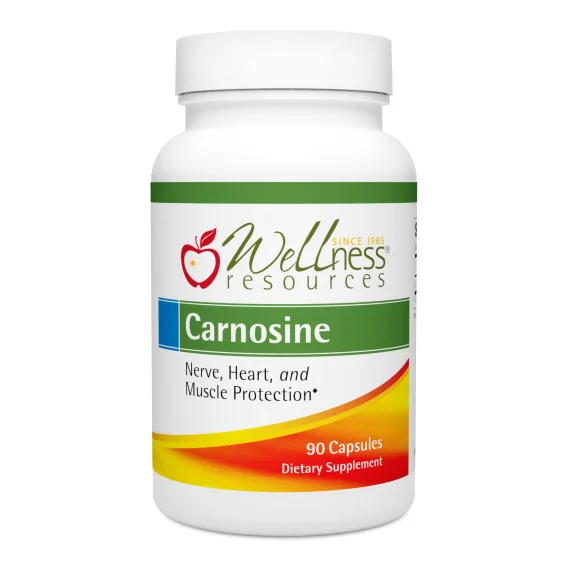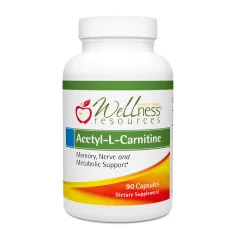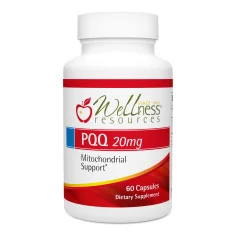Carnosine occurs naturally in the brain, heart, muscles, and skin in high concentrations. It has a rejuvenating effect on proteins and enzymes, and is highly protective to the nervous system, brain cells, kidneys, and eyes. Carnosine is a dipeptide made up of the amino acids beta-alanine and l-histidine.*
At a cellular level, common wear and tear to proteins is caused by multiple factors. These include free radical damage, fragments of damaged proteins linking to other fragments of damaged proteins, and sugar hardening protein structures (forming advanced glycation end products, or AGEs). Carnosine is a key nutrient that helps the body do its normal house cleaning and recovery functions.*
For example, as skin ages the inner skin layer called the dermis undergoes a normal loss of structural integrity. Fibroblasts, the carpenter cells that build connective tissue, are reduced in number. Collagen fibers may become damaged and the matrix that connects cells together experiences wear and tear. Progression of this process is apparent in wrinkles, dryness, inconsistent skin texture and coloring, and sagging skin.
While carnosine doesn't necessarily turn back the clock, it does help to maintain normal function. It supports the healthy function of fibroblasts, is a potent skin antioxidant, and assists the body to maintain normal protein structures.*
Carnosine supports the formation of new connective tissue and it is one more nutrient that contributes to healthier joints and muscles.* It also helps to improve the ability of muscles to perform exercise.*

















